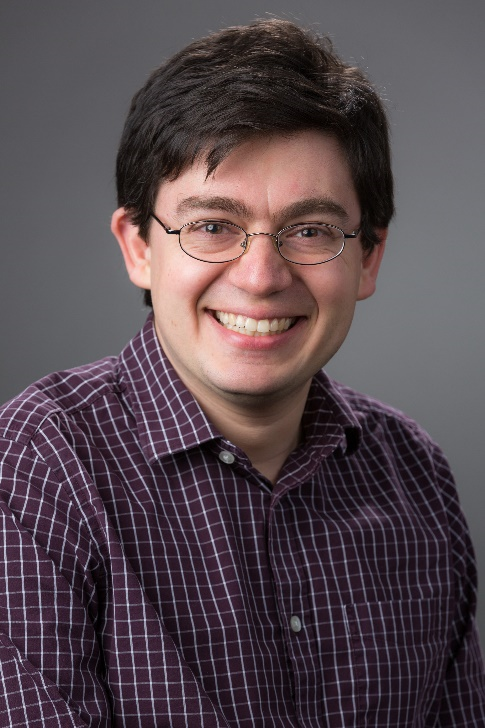Dr. Bonnie L. Bassler, the Chair of Molecular Biology at Princeton University, is an advocate for diversity in science.

Throughout her presentation of the Ingrid Daubechies Lecture on Jan. 31 during Research Week, she emphasized that the diversity of her scientific team allowed every lab member to contribute to different steps of the process of studying quorum sensing, a form of microbial communication. (Watch her talk.)
Bacteria are everywhere. They’re sitting at the tables you sit at, burrowing in the clothes you wear and unfortunately, also crawling around on your skin. For a long time, they’ve had a pretty bad reputation, and for good reason! They have caused plagues that have wiped out masses across the globe, driven up breath mint sales by thriving in your mouth and mutated into every biologist’s Boogeyman when you try to kill them with antibiotics – super bugs!
However, the bacterial redemption arc is also quite compelling. “Good guy” bacteria in the gut help us break down food, produce essential vitamins and also sometimes fight off their evil siblings.
So, good or bad, the impact of bacteria in our daily lives is undeniable. But how does a microscopic little being have the capacity to influence the macroscopic world so greatly?
It doesn’t. At least, not by itself.

A bacterium never works alone because its strength lies in its numbers! Groupwork and communication (as any Pratt star going through recruiting season will swear to their interviewers) are what make bacteria so powerful. A bacterium by its lonesome will act differently than a bacterium surrounded by its daughters, sisters and cousins (bacterial family tree dynamics can get a little unusual).
Knowing that bacteria optimize their behaviors to work efficiently in a group answers the question of how they are so powerful, but it raises another.
How do bacteria know when they have company?
In a world where social media helps us stay connected, it is easy to take rapid status updates for granted. But for tech-deprived microbial colony, how does one member gauge the population of their surroundings? This question is one that Bassler’s lab answered: with a special chemical compound called autoinducers.
Autoinducers are little chemical signaling molecules that each bacterium sends out into its immediate environment. These molecules allow for quorum sensing, or cell-to-cell communication, to take place among bacteria.

Every bacterium senses changes in the concentration of these autoinducers in their surroundings. Sensing a sudden increase in autoinducer concentration will change a bacterium’s gene expression, protein synthesis, and consequently, behavior. It will adapt to group behavior, while a bacterium that senses a drop in autoinducers will adapt to individual behavior.
Bacteria not only sense how many others are around them but also who their neighbors are. Autoinducers are universal to both Gram positive and negative bacteria and are unique to the type of bacteria that produce them.
This provides the bacterium with qualitative information on the population of its surroundings. Are they friends or foes?

In marine vibrio (a genus of Gram-negative bacteria), Bassler’s lab found that quorum sensing could perform intra-species, intra-genus and inter-species identification. This additional information helps the microbes adjust their behavior – from being friendly and supportive towards their relatives to being aggressive and competitive with their enemies.
Bassler provided a real-world perspective on quorum sensing. One species of the vibrio genus, Vibrio cholerae, is responsible for causing Cholera a deadly food and water-borne disease that has plagued low- and middle-income countries for centuries.
When the cholera bacteria enter the host, they are highly virulent and create a sticky biofilm around themselves that helps them clump into aggregates. Their cell density increases with bacterial division until the bacteria sense a certain concentration of autoinducers. Then their gene expression is modified to reduce virulence and biofilm production and the bacterial gene expression patterns shift to escape mechanisms. The bacteria soon break out in large numbers in search of a new host. (Their human host has voluminous, watery diarrhea in response and that becomes the vector for infecting new hosts.)
While the sequence of events that occurred in a cholera infection was known, the discovery of quorum sensing in V. cholerae opens doors for possible treatments, Bassler said. As bacterial communication sets the cycle of infection and division in motion, interfering with the autoinducers produced or disrupting bacteria’s ability to sense them sets the stage for innovative therapies for several infectious diseases.
Quorum sensing is another step towards understanding the world of the tiny microorganisms that influence our world and Bassler and her team are another example of the incredible research that can come from diverse teams in science.

Post by Nidhi Srivaths, Class of 2024





